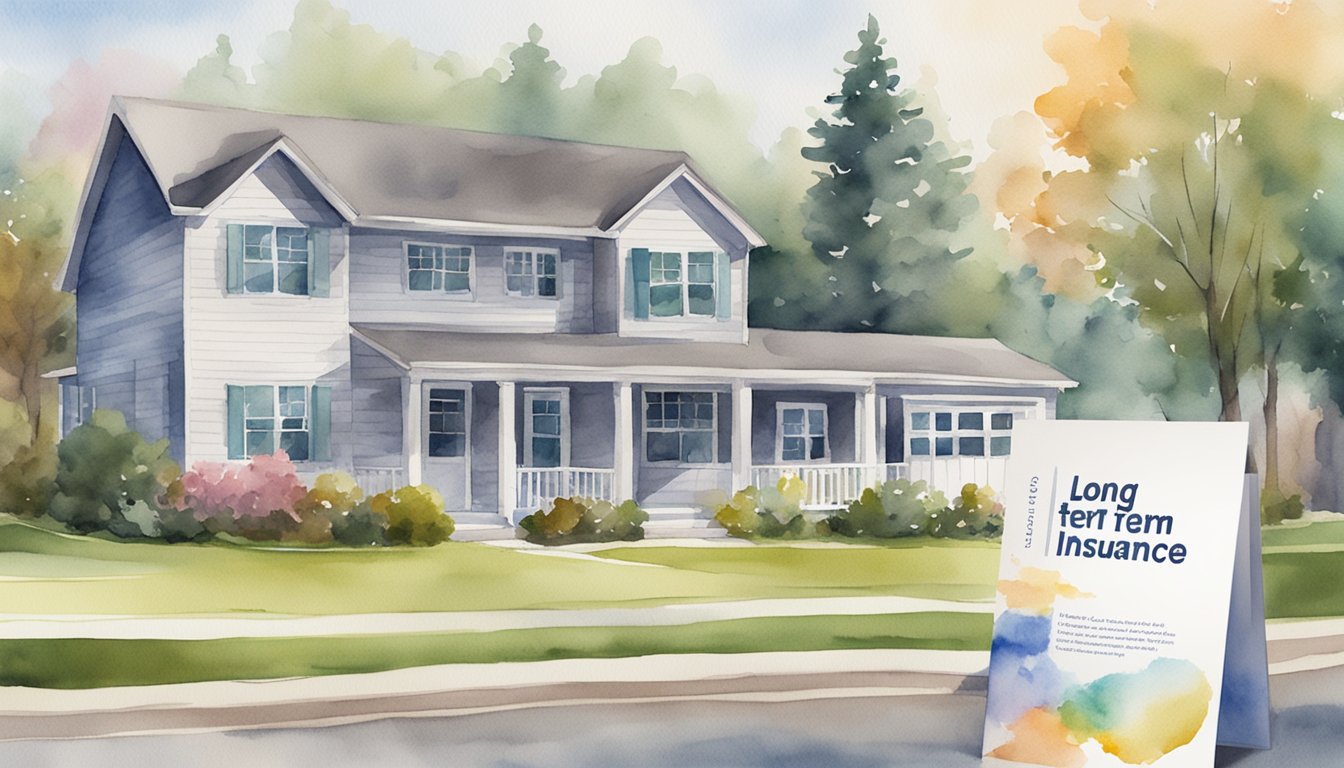Understanding Long-Term Care Insurance
Long-term care insurance helps cover the costs of care for individuals who have chronic health conditions or disabilities and need assistance with everyday activities.
Definition and Purpose
Long-term care insurance is designed to cover services not typically covered by health insurance, Medicare, or Medicaid.
This insurance helps pay for assistance with activities of daily living (ADLs) such as bathing, dressing, and eating.
The insurance policy can include coverage for care received at home, in an assisted living facility, or at a nursing home.
The primary purpose of long-term care insurance is to protect your savings from the rising costs of long-term care.
Without this insurance, paying out of pocket for extended care can quickly deplete finances, especially for seniors.
Policies often also offer tax advantages and may be tax-deductible if the premiums and medical expenses surpass a certain threshold.
Eligibility Criteria
Eligibility criteria for long-term care insurance vary but generally depend on factors like age, health status, and marital status.
Younger and healthier individuals typically receive lower premiums.
Insurers may conduct underwriting to assess your risk profile.
If you have pre-existing chronic health conditions or are already receiving long-term care, you might face higher premiums or denial of coverage.
The American Association for Long-Term Care Insurance suggests that people around 50-65 years old should consider purchasing long-term care insurance as premiums tend to be lower at a younger age.
Cost and Payment Options for Long-Term Care

Long-term care insurance costs can vary widely.
Your options for paying include annual premiums and out-of-pocket expenses.
Planning financially is crucial to manage these costs.
Financial Planning for Long-Term Care
Planning for long-term care involves evaluating your finances and potential medical expenses.
On average, a 60-year-old man might pay $1,200 annually for a policy covering $165,000.
This annual premium can rise with age and health conditions.
You may also consult a financial advisor to create a financial plan, especially if you have chronic medical conditions.
Long-term care expenses can quickly deplete savings if not carefully planned.
Be sure to consider whether premiums might rise with inflation, affecting your future budget.
Using a cost of care survey can help forecast expenses in nursing homes, assisted living facilities, and home care.
Understanding the benefit amount and how long it will last is key.
Keep in mind that expenses might be tax-deductible under certain circumstances.
Insurance Payment Mechanisms
Insurance payment mechanisms for long-term care generally involve premiums, deductibles, and lifetime benefits.
Premiums are the regular payments you make to the insurance company to maintain coverage.
It’s important to know that Medicaid and Medicare have limited long-term care benefits.
Policies often include a deductible, which is the amount you pay out of pocket before insurance begins to cover costs.
You may choose between various benefit options depending on your needs and lifestyle.
Insurance companies also offer policies that cap lifetime benefits to three to five years.
Be aware of the different coverage levels and pick one that aligns with your financial situation and healthcare needs.
Facility and Home-Based Long-Term Care Services

Understanding the variety of long-term care options is essential.
These services range from care in specialized facilities to assistance delivered in the comfort of your home.
Types of Facilities and Services
Long-term care insurance covers several types of facilities. Assisted living facilities provide a community setting where you can receive help with daily activities such as bathing, grooming, or preparing meals. Nursing homes offer more intensive care, often catering to those with chronic conditions or disabilities needing skilled nursing.
If you prefer to receive care at home, services like in-home care are an option.
This includes personal care, homemaker services, and help from a home health aide. Adult day care centers provide care and supervision during the day, giving caregivers a break.
For those with cognitive issues like dementia, memory care facilities provide specialized care and activities.
Choosing the Right Care
Selecting the best care depends on several factors.
Consider the marital status and health insurance coverage.
Your specific needs, like help with activities of daily living, dictate whether you need basic or more specialized services.
For peace of mind, evaluate the types of care covered, from home health care to nursing home care.
It’s crucial to consider the costs.
Long-term care insurance can help alleviate the financial burden.
Policies often include benefits for respite care to give primary caregivers a needed break.
Before deciding, compare the annual premium of different policies.
Look into potential tax deductions related to your insurance coverage.
Ensure that your chosen policy aligns with care options and personal needs.
Frequently Asked Questions
These are some of the most common questions people have about long-term care insurance, covering eligibility, costs, benefits, and more.
What are the eligibility criteria for long-term care insurance?
Eligibility for long-term care insurance mainly depends on your age, health, and medical history.
Some companies may require a medical exam.
If you have pre-existing conditions, it may be harder to qualify.
Additionally, applications are more likely to be rejected as you get older.
What factors influence the cost of long-term care insurance premiums?
Several factors can affect the cost of premiums.
These include your age at the time of purchase, your health condition, the amount of coverage you select, and the length of the benefit period.
Gender also plays a role—women usually pay higher premiums than men because they tend to live longer and are more likely to need care.
How does age impact the cost and benefits of long-term care insurance?
The cost of long-term care insurance increases as you age.
For example, people in their 50s pay lower premiums than those in their 60s or 70s.
Additionally, the older you are when you apply, the more likely you are to be declined.
On the benefits side, policies purchased at a younger age often have better coverage options.
What are the common exclusions to be aware of when purchasing long-term care insurance?
Common exclusions include pre-existing conditions and certain types of mental or nervous disorders.
Diseases such as Alzheimer’s may be covered, but not all policies are the same.
It’s essential to read the terms carefully to know what is excluded.
In what ways does long-term care insurance differ from traditional life insurance?
Long-term care insurance is designed to cover the costs of care services you might need as you age, such as nursing home care or home health care.
Traditional life insurance, on the other hand, provides a payout to your beneficiaries upon your death.
The primary difference is in the type of benefit provided and the situations in which each type of insurance becomes relevant.
What are the considerations for selecting a reputable long-term care insurance provider?
When choosing a provider, it’s important to look at their financial stability, the range of benefits they offer, and their reputation for customer service.
Check their ratings from independent agencies and read customer reviews.
It’s also wise to understand their claims process and how easy it is to get reimbursed for covered expenses.






